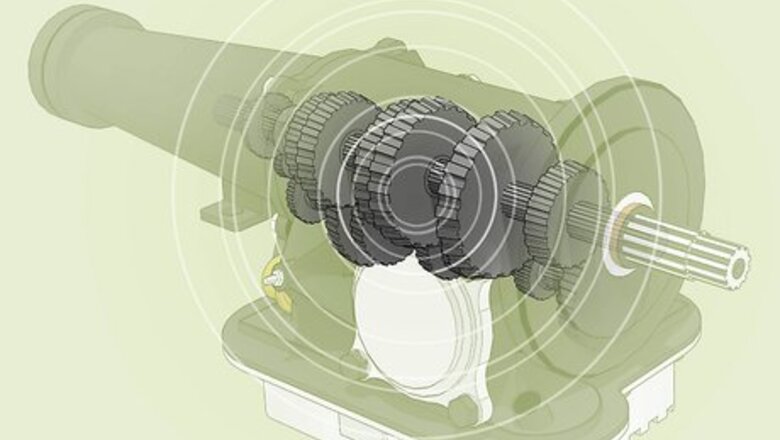
views
- Symptoms of low transmission fluid include whirring or grinding noises in your engine bay, transmission temperature warning lights, vehicle lurching, slipping gears, and fluid leaks.
- Check the fluid levels on your transmission’s dipstick to determine if you’re running low (the levels should at least reach the “warm” hashmark).
- If you’re experiencing any symptoms of low transmission fluid, see a mechanic to get your transmission inspected and repaired.
Symptoms of Low Transmission Fluid
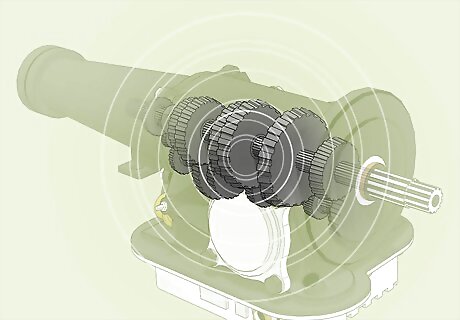
Strange whirring or grinding noises If your transmission fluid levels are low, you’re likely to hear grinding or whirring noises. The grinding is the sound of the individual transmission gears rubbing against one another without adequate lubrication. If you hear whirring, that’s the sound of the transmission fluid clogging up or flowing unevenly through the system.
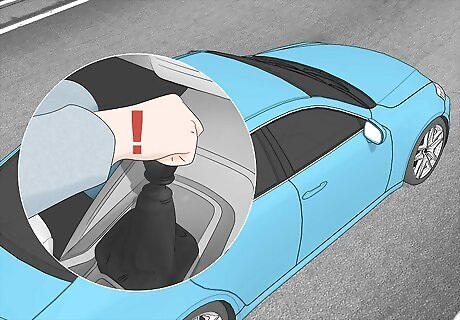
Trouble shifting gears When you change gears, the gear stick inside of the transmission moves and slides a rod that causes a new set of gears to rotate. Without adequate lubrication, new sets of gears will struggle to engage smoothly. In an automatic, you may feel your vehicle stutter or stick when the RPMs try to turn over as a new gear engages. In a manual, the stick shift may be difficult to physically move. In an automatic, you may feel a lot more resistance when you try to put the car in reverse or park.
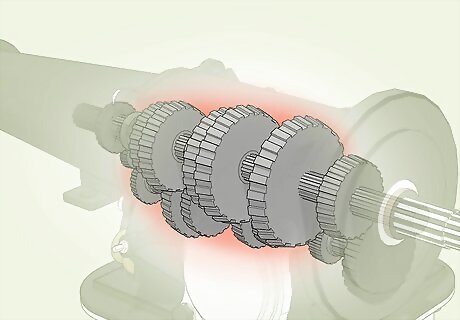
Overheating in the transmission system One of the key jobs of the transmission fluid is to prevent overheating. When lubricated gears rub against one another, the transmission fluid keeps the gears from producing a ton of friction. Without that protective barrier, friction increases, and the overall temperature rises.
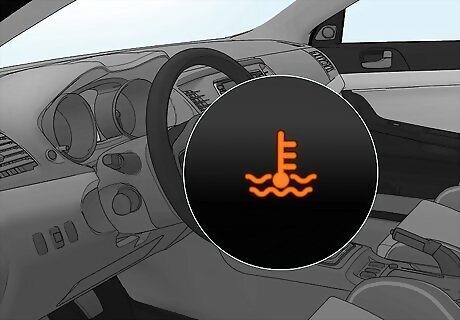
Temperature warning on your dashboard If the temperature inside of your transmission rises high enough, a red transmission temperature warning indicator might come on. This dash light looks like a thermostat inside of the gear. If this light pops on, pull over and stop driving immediately, since it’s an indicator your transmission is on the verge of a critical failure. Just FYI, the transmission temperature warning will often pop on in colder weather, but it will be blue (not red) to indicate that the transmission hasn’t warmed up yet. It’ll usually go away after 1-2 minutes. If you drive a modern vehicle with a computer screen in the console, you should get a “transmission overheating” message of some kind, as well.

Vehicle lurching Without enough transmission fluid, your transmission won’t stop, slow down, or accelerate smoothly. It may have trouble dropping gears or the friction between individual gears will cause the gears to slow down faster than they normally would. This will cause your vehicle to kick forward or hesitate back when starting up or stopping. In general, your vehicle will feel extremely clunky and “off” compared to how it normally would. If you drive a manual, you’ll likely feel these lurches and kicks when you change gears.
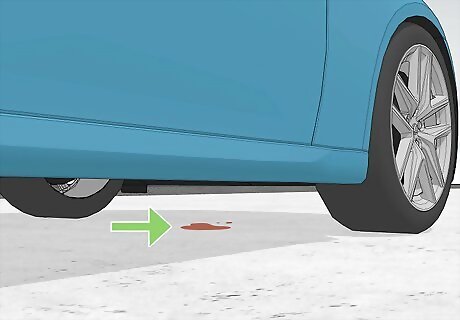
Transmission fluid leaks Drops or puddles of transmission fluids pooling up under your vehicle are a sign of a leak. If you’ve got a leak, the fluid levels inside of your transmission are too low by default, and the fluid levels may continue to deplete until they’re dangerously low depending on where the leak is located. Transmission fluid is usually red or pink when it’s new, and dark red (or even brown) if it’s older. Transmission fluid smells like petroleum, and it will normally leak under your engine bay. If your transmission fluid is dark brown and smells like burnt marshmallows, your fluid is spent and needs to be replaced. EXPERT TIP Hovig Manouchekian Hovig Manouchekian Auto Repair & Design Specialist Hovig Manouchekian is an Auto Repair and Design Specialist and the Manager of Funk Brothers Auto, a family-owned business operated since 1925. With over 30 years of experience in the automotive industry, Hovig specializes in the process of auto repair and maintenance. He is also very knowledgeable in common automotive issues and needs including engine repair, battery replacement, and windshield accessory and maintenance. Hovig's knowledge and hard work have contributed to Funk Brothers Auto winning Angie's List Super Service Award for five consecutive years. Hovig Manouchekian Hovig Manouchekian Auto Repair & Design Specialist If you have a coolant leak, find the source in the transmission. Temporarily bypass the cooler. If the leak stops, the issue is likely within the cooler or hoses. A persistent leak suggests a problem with the transmission itself. Seek a qualified mechanic for a diagnosis and repair to prevent further damage.
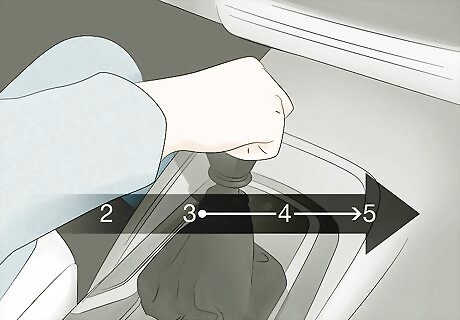
Slipping gears Gear slipping occurs when your transmission should be in one gear, but it slides into a gear that’s too high or too low given the driving conditions. You’ll likely lose engine efficiency when this happens or feel like your car is fighting to maintain power. This happens because the gears struggle to remain stable when some of them are lubricated and some of them are not. Slipping gears can be dangerous. If your acceleration or braking power diminishes in a tight situation on the road, you could end up crashing. If you drive a manual vehicle, you might even feel your stick shift kick or pull in the direction it’s slipping.
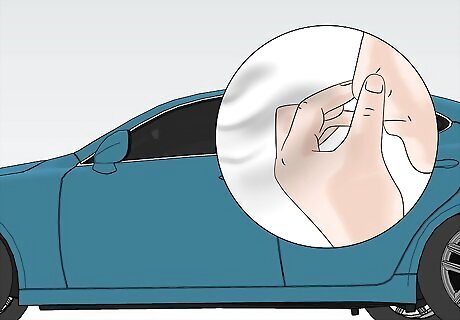
Burning smells A burning odor in your cabin indicates that transmission fluid is burning off while you drive. This can happen if your transmission is running too hot or if you don’t have enough transmission fluid in the system. This is a major sign your transmission fluid needs to be replaced as well since newer transmission fluid won’t be as likely to burn. If you’re driving, pull over. A noticeable odor indicates your transmission is in a critical state.
How to Check Your Transmission Fluid
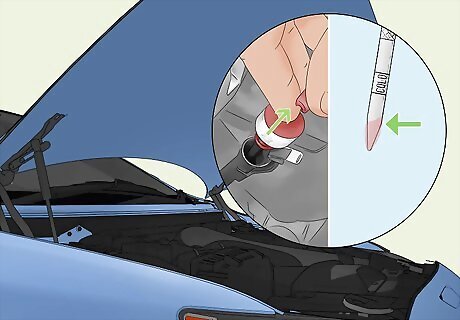
Use the dipstick to determine where the fluid levels are. Checking your transmission levels is similar to the process of checking your oil. With a cold engine, pop the hood and locate the dipstick for your transmission. Remove the dipstick, wipe it off with a rag, and reinsert it all the way. Pull the dipstick out to see where the fluid levels are. If the fluid is under the “full” or “warm” line, your transmission fluid is low. The transmission fluid dipstick is usually yellow or red. It may say “trans fluid” on it, as well. Most modern vehicles have two “full” lines. One “warm” and one “cold.” These are the levels your fluid needs to be at when the engine is cold vs when the engine is hot. Think of the “warm” line as the minimum. The transmission is usually behind and slightly underneath the engine, so the dipstick will typically be closer to the cabin than the rest of your engine components. Some vehicles have closed transmission systems without a dipstick. Refer to your manual for more instructions if you don’t see a dipstick.
Adding Transmission Fluid
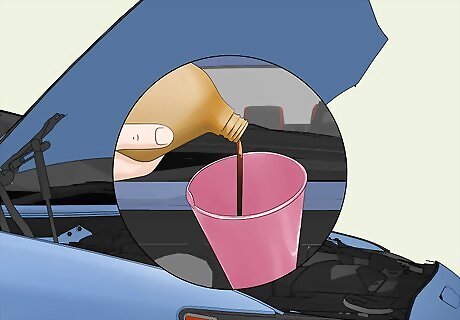
Slowly add transmission fluid to the filler port to fill it up. Refer to your manual to determine what kind of transmission fluid you need and where you fill up the transmission fluid. Typically, you use the same opening where the dipstick is, but some vehicles have a dedicated port for this. When you’re ready, insert the funnel into the port and slowly add transmission fluid. Check the fluid level with the dipstick and keep adding until the fluid reaches the “full” or “cold” level on the dipstick. If you’re going to refill the transmission fluid yourself, refer to your manual for the proper procedure.
Servicing Your Transmission
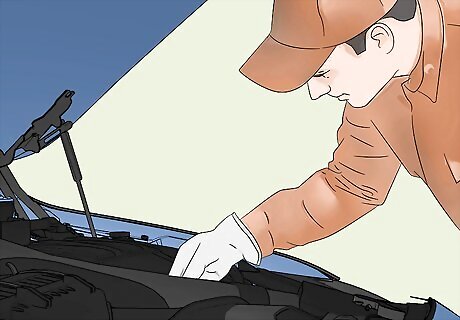
See a mechanic to have your transmission diagnosed and repaired. We’re not going to sugarcoat it—the transmission is the single most complex system in your vehicle, and you can't work on it from a home garage. If you know the transmission is burning or leaking fluid, or you notice any other transmission issues, contact a mechanic who specializes in working with transmissions to make repairs. If you are experiencing any symptoms that your transmission fluid is low, see a transmission specialist. The transmission fluid shouldn’t need to be refilled repeatedly the way engine oil does, and if you’re experiencing issues, it’s a sign your transmission needs to be inspected.
How Does a Transmission Work?
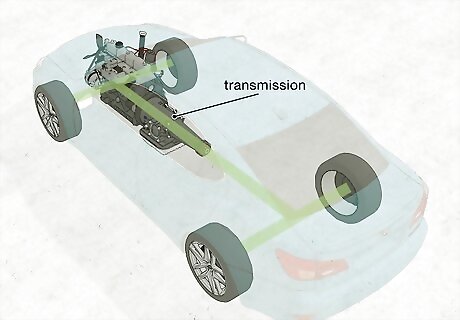
The transmission transfers power from your engine to the wheels. Your engine’s cylinders generate a ton of power when they burn gas, but that doesn’t make wheels go forward. All of that engine power is absorbed by the transmission, which is a series of concentric gears and pins that spin faster the harder your cylinders pump. This generates the rotational power your wheels need to turn. The transmission also creates the conditions you need to change gears. Each gear change occurs when a new size and ratio of gear is engaged. You can only reverse if those gears are able to spin backward. Without a working transmission, your vehicle will struggle to absorb and distribute the power generated by your engine.
What Does Transmission Fluid Do?
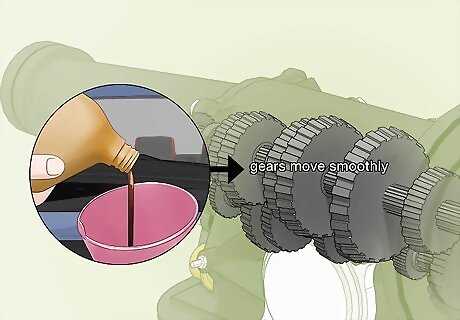
Transmission fluid is a lubricant for the transmission gears. The same way an engine needs oil to keep the moving parts lubricated, your transmission needs transmission fluid to keep everything moving smoothly. This helps your engine convert power smoothly from the engine to the wheels so that your ride is comfortable and safe.




















Comments
0 comment